Iliocostalis Lumborum Pain | Everything You Need to Know to Relieve Your Low Back Pain Right Now and Stay Pain-Free
If you’re on a quest to help your low back feel better, you might be suffering from iliocostalis lumborum pain. This pain-causing muscle often escapes notice and lets other, more popular muscles like the quadratus lumborum take the blame. Here’s more about the iliocostalis lumborum and 5 easy exercises you can do to relieve iliocostalis lumborum pain.
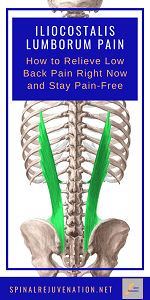
When you’ve got low back pain and you want to try to fix it yourself, the first thing you want to do is figure out which muscle is causing your pain.
For me, I think of a lineup of possible muscular culprits similar to the lineup in the movie, The Usual Suspects.
With low back pain, lots of people tend to think the quadratus lumborum is the likely culprit. The QL has a bad rep for a good reason but it’s not the only muscle that can wreak havoc and cause low back pain.
The erector spinae is also a good option. With muscles spanning the entire length of your spine, any one muscle in the erector spinae group can have an issue and cause pain up or down the chain.
Yet another potential cause of low back pain is the psoas. Although this muscle is normally thought of as a hip-flexing muscle, it is also a leading cause of low back pain (especially if you also are suffering from hip pain).
And then, there’s the iliocostalis lumborum. Because it’s located near the quadratus lumborum and its functions are so similar, iliocostalis lumborum pain is often misdiagnosed as a quadratus lumborum issue.
Essentially, the iliocostalis lumborum is the overlooked cause, the muscular Kaiser Soze in your low back. Here’s more about iliocostalis lumborum pain—why you have it and how to get rid of it.
Related: If you want to learn The Fast + Easy Way to Relieve Hip + Back Pain, click here for your free digital guide.
So, Where Is the Iliocostalis Lumborum?
According to Flash Anatomy Muscles Flash Cards, the iliocostalis lumborum originates on the “anterior surface of a broad and thick tendon which originates from the sacrum, spinous processes of the lumbar and 11th and 12th thoracic vertebrae, and from the medial lip of the iliac crest.”
In plain English: The iliocostalis lumborum muscle starts at three spots:
- the tendon that comes off the tailbone (sacrum),
- the bony spine of all 5 lumbar vertebrae and the lower 2 thoracic vertebrae (basically, the spiny part of your low back that you can feel with your hand), and
- the top inside edge of the back of your pelvis.
So, you can see that the iliocostalis lumborum originates all along the top edge of the back of your pelvis, down by your tailbone, and off the sides of the vertebrae in your most likely achy low back.
The iliocostalis lumborum inserts on the inferior borders of the lower 6 or 7 ribs.
In plain English: It inserts on the bottom edges of the ribs in line with about the middle of your rib cage on down (vertebrae T-5 or T-6 through T-12).
The spots where iliocostalis lumborum inserts are in about the middle of each side of your rib cage, on the bottom edge of your lower ribs.
To feel your entire iliocostalis lumborum muscle with your hands, start near your tailbone and sweep your hands up on an upward diagonal line until you find the middle of your rib cage.
What Does the Iliocostalis Lumborum Do?
When both sides of the iliocostalis lumborum act at the same time, they extend the spine. As your head moves behind the line of your spine, you move into spinal extension.
This is common when you reach back to stretch in your chair.
However, when only one side of the iliocostalis lumborum works, it laterally flexes the spine. Lateral flexion is when your body bends straight to the side.
For example, if you were sitting in a chair and wanting to set something on the floor beside you, you would laterally flex and set down the item.
In that example, you are bending and moving your rib cage toward your pelvis. Lateral flexion works the other way, too.
You can also move your pelvis toward your ribs. One of the best examples of this type of movement is using your hip to help boost a bag of groceries or a child.
Perhaps you have already noticed that this sounds an awful lot like the quadratus lumborum. The muscles are neighbors and perform similar actions.
It has also been noted that the two are somewhat of partners in crime. Frequently, if one of the muscles is acting up, the other one will be, too. It is also possible that, because the quadratus lumborum is more well-known, it gets blamed for ilicostalis lumborum dysfunction.
How Can You Injure Your Iliocostalis Lumborum?
Unfortunately, the iliocostalis lumborum can be injured simply by performing its standard actions. A reach backward or a simple bend to the side can cause the muscle to spasm and create pain and dysfunction. No matter the cause, the result is iliocostalis lumborum pain.
Keeping (or Making) Your Iliocostalis Lumborum Healthy
If you have any sort of pain, you should consult your physician. Your doctor can order the proper tests, medication, and therapy to help relieve your pain.
However, if you want to do some exercises at home to help strengthen and stretch the iliocostalis lumborum, I have a couple of suggestions.
Before you begin, you need to know that tightness = weakness. This is why it’s important to both stretch and strengthen. You stretch to decrease your tightness, and you strengthen to decrease your weakness.
Here are the five best iliocostalis lumborum exercises to relieve pain.
The 5 Best Iliocostalis Lumborum Exercises
Up above, you learned that you want to do exercises to extend your spine and reach straight to the side. By doing these two motions, you strengthen your iliocostalis lumborum muscle.
However, you also need to make sure to stretch. Make sure to do the exact opposite activity to get a good stretch.
For example, the opposite of extending your spine is bending forward. The opposite of bending to one side is bending to the other side. That’s awesome because it means that any side bending exercise you do strengthens one side while you stretch the other.
1. Cobra Pose
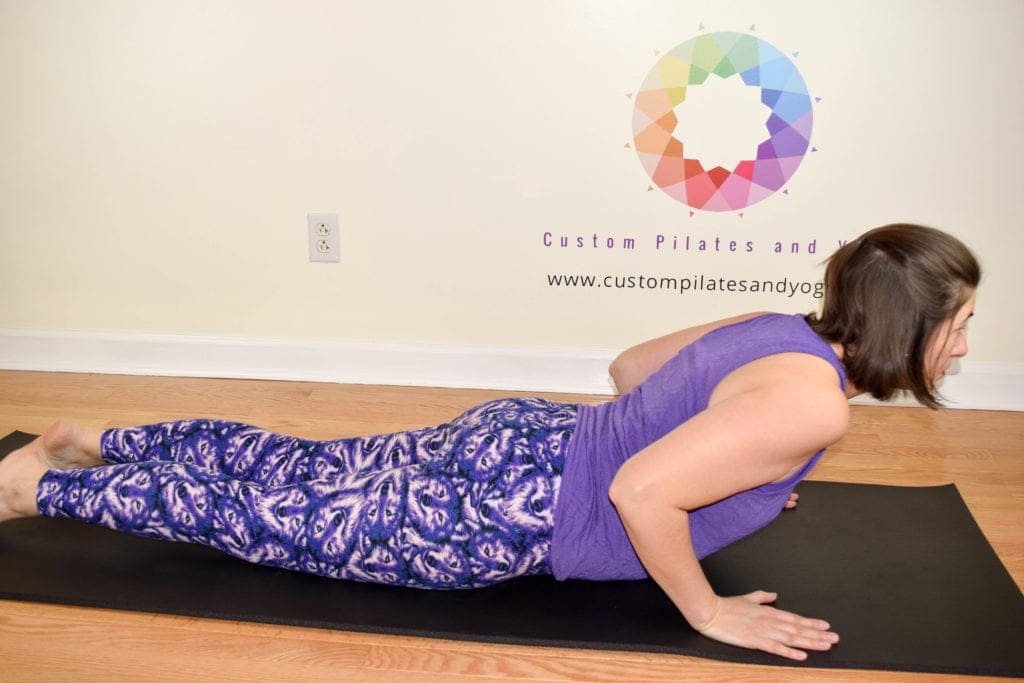
You can strengthen both sides of your iliocostalis lumborum muscle at the same time when you practice Cobra pose.
- Begin on your stomach with your hands beside your rib cage. Spread your fingers. Bring your legs together with the tops of the feet pressing into the ground. If you have issues with your sacrum (tailbone) or if this feels uncomfortable, allow space between your legs.
- Roll your right shoulder blade onto your back. Feel it slide away from your ear.
- Roll your left shoulder blade onto your back. Feel it slide away from your ear.
- Reach from your head through your toes. Imagine you are straight as an arrow.
- Inhale, press into your toenails, and lift your belly. Press into your hands as you reach your elbows back and broaden your collarbones. Ground your pelvis, legs, and feet as you open your chest forward. You are working on opening the thoracic spine, so make sure you don’t feel tension in your low back. Imagine you are rotating your sternum (breast bone) toward the wall in front of you.
- Inhale and exhale through your nose. As you inhale, think of lengthening the spine and keeping the abdominals engaged. On the exhale, think of softening into any tight spots you might have.
- Notice the amount of weight in your hands. If you feel heavy in your hands, you are relying too heavily on your arms and cheating your back out of the work it needs. Instead, come out of the pose and, when you try again, don’t lift quite as high. Remember, this exercise is about your spine.
- Some people will lift such that their arms mostly straighten. If this is you, keep a slight bend in your elbows to avoid hyperextension.
- To come out of the pose, inhale to engage the abdominals and lengthen. Exhale to lower.
Make sure to keep the front of your pelvis, legs, and tops of your feet connected to the ground the entire time.
2. Reverse Warrior

Strengthen one side of your iliocostalis lumborum muscle while stretching the other side when you practice Reverse Warrior.
- Inhale and exhale through your nose.
- Start standing at the front of your mat.
- Come into Warrior 2 by stepping your right foot back about 4 feet and aligning your right heel or arch with your left heel. Make sure your left knee tracks over your second and third toes. Stack your rib cage directly above your pelvis. Reach your arms to the side and gaze over your left fingers.
- Lift your rib cage away from your hips, and let your right hand lower to your right thigh.
- Reach through your left hand as the arm raises, helping you reach up and over to the right side.
- Look at the inside of your arm or the palm of your hand.
- Hold and breathe for 5-8 breaths. Resist the temptation to let this pose crumple. As you breathe and soften, maintain the distance between your rib cage and pelvis. This will help prevent injury.
- To switch sides, lower your arms and return to Warrior 2. Straighten your legs, rotate your left foot forward, and rotate your right foot out. Make sure you have correct alignment for your Warrior 2 on the right side before you complete steps 3-6 for Reverse Warrior on the right side.
- To finish, lower your arms to Warrior 2 and transition to your next pose.
3. Cat Stretch

Stretch the iliocostalis lumborum with Cat Stretch. This gentle bend forward will stretch both sides of the muscle.
- Begin on your hands and knees with your hands under your shoulders and your knees under your hips in Table pose. Take the time to ensure everything is in good alignment. You want to particularly make sure your pelvis is in neutral and you’re pushing the floor away from you.
- Hug your belly button up toward your spine as you inhale. Decide how you would like to round your spine for Cat pose. For example, you could choose to move from your pelvis first, from your head first, or from your head and pelvis at the same time.
- Exhale and round up. Feel how your spine is completely flexed and curved.
- Inhale and hold. Decide how you would like to lengthen your spine back to neutral. Again, you can move pelvis first, head first, or pelvis and head at the same time.
- Exhale and lengthen back to your starting position.
- Complete 4-6 Cat stretches.
4. Cow Pose
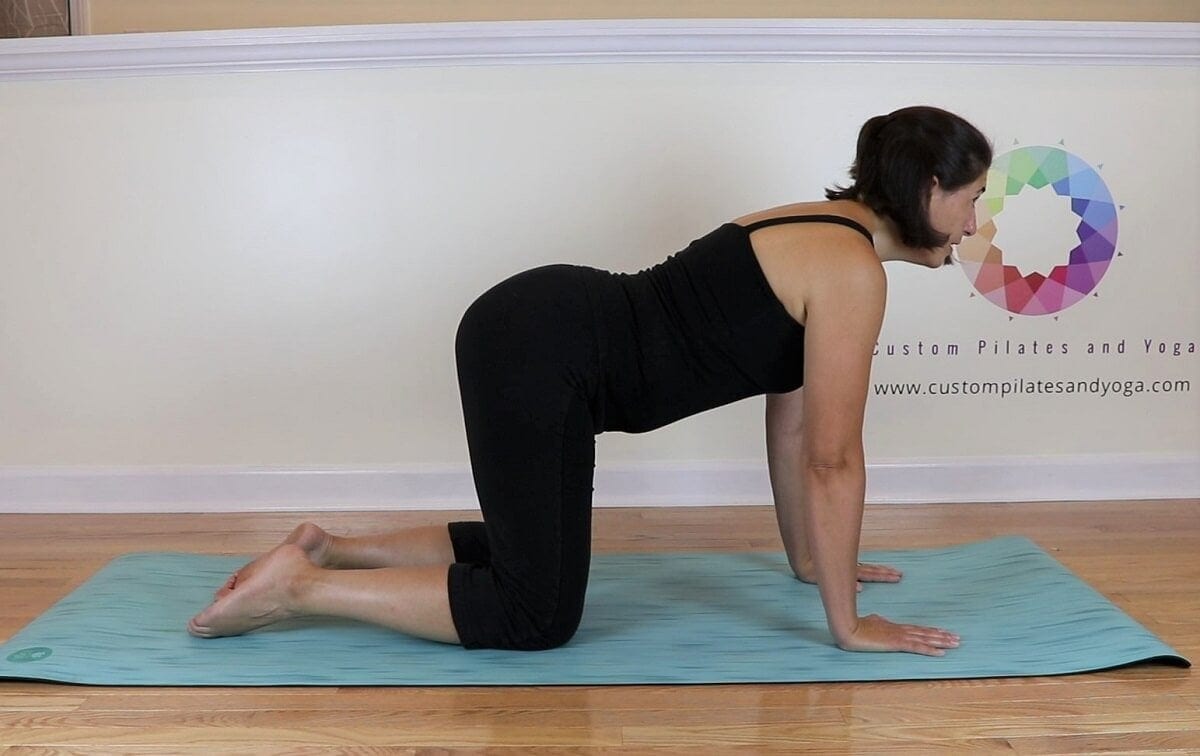
For another mild iliocostalis lumborum-strengthening exercise, try Cow pose. This simple movement activates the iliocostalis lumborum on both sides of your spine.
- Begin on your hands and knees with your hands under your shoulders and your knees under your hips in Table pose. Take the time to ensure everything is in good alignment. You want to particularly make sure your pelvis is in neutral and you’re pushing the floor away from you.
- Hug your belly button up toward your spine as you inhale. Decide which version of Cow pose you would like to do first. For example, you could try to just open your upper back or you could try to open your entire spine.
- Move into your Cow pose. Feel how your heart opens forward and your spine stretches.
- Exhale and move back to your starting position.
- Complete 4-6 Cow poses.
5. Ab Prep
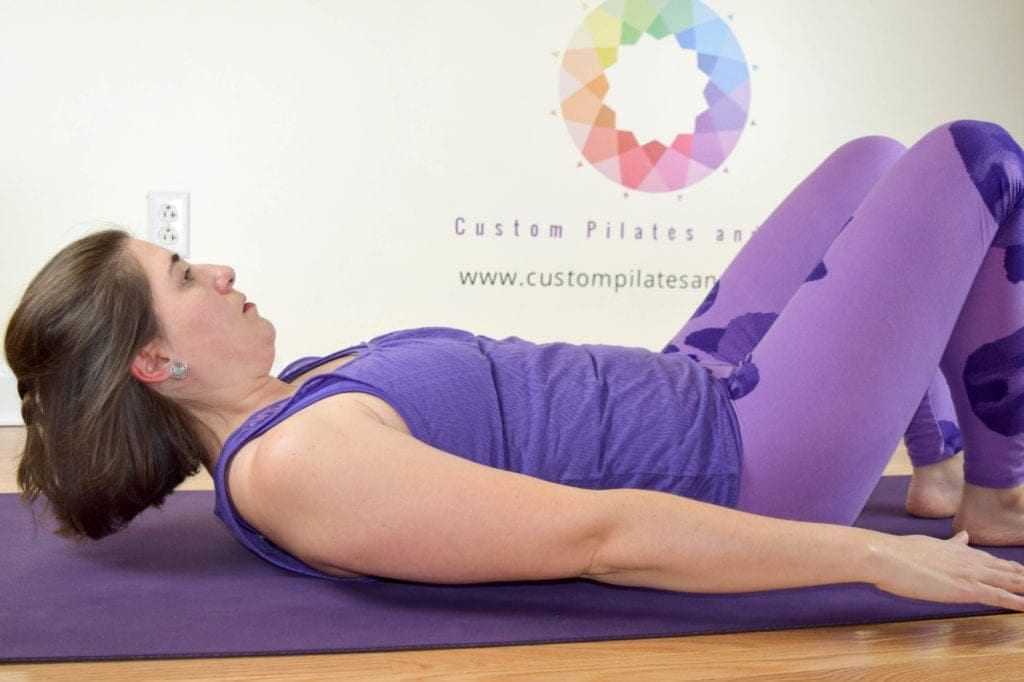
Another wonderful way to stretch your iliocostalis lumborum is with Ab prep. Plus, when you’re lifted into Ab prep, you can get a bonus stretch when you gently reach one hand toward your heel.
- Begin on your back with your heels in line with your SITs bones. (SITs bones are the bony part of your tush.) Make sure your pelvis and rib cage are in neutral, and reach your arms by your sides.
- Lightly hug your belly button toward your spine.
- Inhale into the sides of your ribs and slightly tuck your chin. Think of anchoring your sacrum (tailbone) to the ground so your pelvis does not move in this exercise.
- Now, imagine there is a steel rod running from the top of your head down your spine to your bottom rib. As you exhale, use your abdominals to tuck your bottom ribs in, lifting your head, neck, and upper back in one piece. Allow your hands to lift slightly off the floor.
- Inhale into the sides of your ribs.
- Exhale and lower to your neutral starting position.
- To add the side reach, follow steps 1-4 to lift into Ab prep. Then, as you inhale, reach your right hand toward your right heel. Exhale and come back to center. Inhale and reach your left hand toward your left heel. Exhale, come back to center, and lower to the floor.
Make sure the collarbones stay broad to avoid neck and shoulder tension. Also, check that you are not pulling your head forward.
Other Side-Bending Exercises
If the exercises listed above aren’t your cup of tea, don’t worry. There are tons of side-bending exercises you can do to strengthen and stretch your iliocostalis lumborum.

Here are a few:
Other Spinal Extension Exercises
Don’t forget, you also need to practice spinal extension (like leaning back in your chair) if you’re going to strengthen your iliocostalis lumborum muscle.
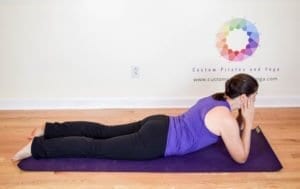
Here are several other options in case Cobra pose and Cow pose aren’t your favorites:
Make sure to draw your belly button to your spine to help support your low back as you work.
Other Spinal Flexion Exercises
All of the above poses and exercises will help you strengthen your iliocostalis lumborum. But remember, you still need to stretch it.
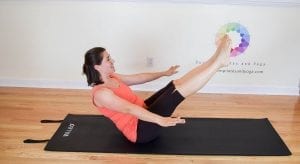
The opposite of the spinal extension exercises is spinal flexion. Spinal flexion exercises and poses include (but are not limited to):
- Navasana,
- Plow pose,
- Roll up,
- Roll over,
- The Hundred,
- Single leg stretch,
- Scissors, and
- Spine stretch forward.
Want to Learn More About Relieving Low Back Pain?
If you’re looking into iliocostalis lumborum pain today because you have some low back pain that you’re trying to get rid of, you’re in luck! I’ve created a course to teach you everything you need to know to permanently ditch hip and back pain. Click here to check out my Spinal Rejuvenation program.
Or, if you’d like a free sample of what you’ll learn in class, click here to download your free copy of The Fast + Easy Way to Relieve Hip + Back Pain.
To learn more about all the muscles in your body, check out Flash Anatomy Muscles Flash Cards. If you really enjoy anatomy and want a tool to help you locate specific muscles correctly, I highly recommend these flash cards. (Your purchase of this product from this link results in a small commission for me.)
Also, the image of the iliocostalis lumborum came from Kenhub.com, a leader in anatomy. This is a great website for learning more about your body, and they often have some of the best images of your muscles. Here’s the link to their information about the iliocostalis lumborum.

I will do that Sarah.
I believed the pain I have experienced is due to my swollen Iliocostalis. The symptoms were all present. like bloating and spasm.
Best wishes for an easy recovery.